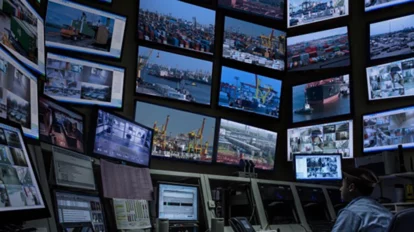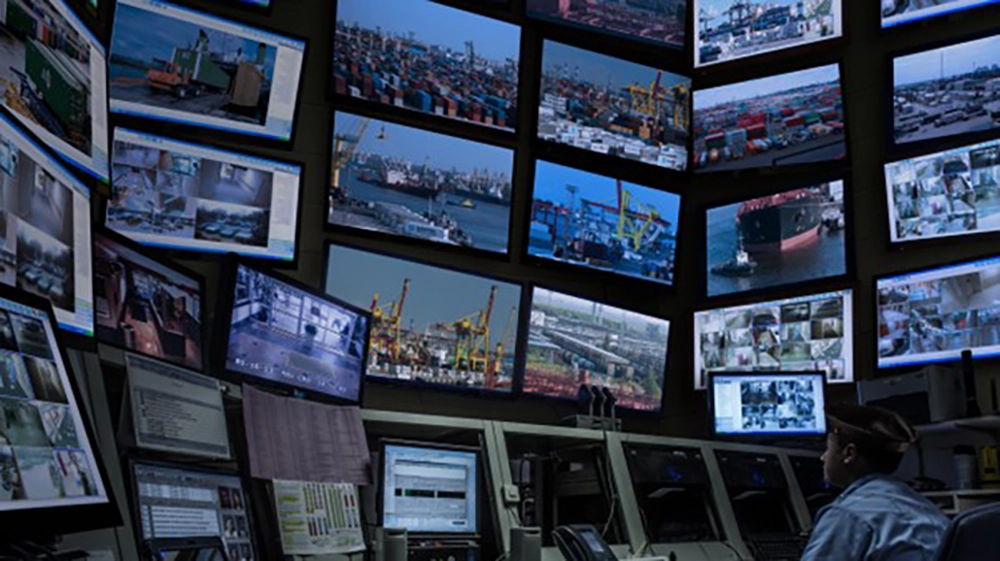



Making smart buildings smarter
By Chubb | 1st May 2023




By Chubb | 1st May 2023
Smart buildings play a crucial role in the functioning of smart cities. From the early phases of a building’s design, numerous stakeholders have input into a smart building’s use and the technology packed inside. Recent figures from Fortune Business Insights show that the smart buildings market is on a healthy trajectory and is projected to grow to £279 billion by 2029. In this blog, Chubb’s Marketing Director, Carla Sousa, gives her insight into how connected technologies are serving as a bedrock for smart buildings and how a new collaborative situational awareness tool can make buildings even smarter.
The evolution of smart buildings
When the first skyscraper was built in 1885, it was a dawn of a new era for city skylines. The Home Insurance Building in Chicago was initially 10 storeys and a touch over 42 metres high and became the first building to support its entire weight with an iron frame. Some 40 years later, in 1929, London had its first skyscraper at 55 Broadway. At the time, it was the tallest office block in the city, standing at 56 metres. However, in today’s rising skyline, the Grade I listed building is roughly only a sixth of the size of The Shard. Tall buildings started to pop up more frequently, and after a period of environmental changes and advancements in technology, buildings became smarter. Then in 1981, the term “Intelligent Building” was coined. United Technology Building Systems (UTBS) Corporation in the US began using technology to control the heating, ventilation, and air conditioning in its building to improve its employees’ comfort and reduce the amount of energy they were using. Fast forward to the modern day, and it is incredible to think about the pace at which technology has moved since the 80s, let alone how far buildings have come since 1885. This has partly been driven by user demand. What people demand and expect from the building they live in or work in has changed significantly. It is now a prerequisite for buildings to optimise the relationship between structure, systems, services, and management, as well as the interrelationship between each of them. Building owners must now ensure that they are maximising the use of space, efficiently managing energy consumption, providing a comfortable working and living environment, and offering maximum security, all while doing so sustainably and with minimal impact on the environment.
Inside a smart building
Typically, a smart building is filled with connected devices that are beyond the traditional building structure and function. The interoperability of these devices provide the perfect platform for generating data and analytics, which have become the bedrock of every smart building. Systems such as heating, ventilation, air con, lighting, access control, CCTV, fire safety systems, and even elevators can be connected to the Building Management System (BMS). Each system will often feature sensors or devices that are IoT enabled, which not only allow everything to function properly, for instance, switching off the lights in rooms that are not occupied, but also means they remain connected. Building owners can therefore collect statistics on everything from temperature and humidity to air quality and room occupancy. Then there are systems that incorporate Artificial Intelligence (AI) and machine learning. While AI might not be anything new (the first mention of AI came in 1956), using systems with machine learning algorithms can enhance data collection, help with a deeper dive into the information that is collected, and then learn from it. For instance, CCTV cameras have evolved considerably from image capture and motion detection; they now have the ability to identify patterns, flag suspicious behaviours, and distinguish between the movement of potential intruders and other moving objects. Over time, the more data that is gathered, the greater the AI’s ability to learn and spot patterns, further enhancing its ability to protect. Fast networks and cloud storage make it possible for huge amounts of data to be stored and accessed instantly from anywhere. This is particularly useful for maintenance purposes as engineers can access systems remotely to rectify any issues. This mitigates any need for travel and is a highly efficient use of the engineer’s time.
Introducing Airbox
With smart buildings seemingly operating at maximum efficiency and providing total comfort to occupants, there is a wider scope for buildings to be adaptable and flexible. Rather than filling buildings with technology for technology’s sake, it should be implemented to add benefit. One such beneficial piece of technology helping to make smart buildings even smarter and safer is our collaboration with Airbox Systems, a provider of asset-tracking solutions for frontline professionals. Last year, we combined our expertise to create a situational awareness tool that utilises data from sensors, cameras, and other sources to provide real-time monitoring and analysis of any given environment. Airbox Systems’ core solutions are used by law enforcement agencies, private and government agencies, as well as SAR and HEMS organisations. With the integration of our access management system, ADACS, it means we can widen the scope and provide real-time CCTV feeds from a whole host of locations directly to frontline field professionals such as fire and emergency services. By collecting and collating data and security information from multiple channels in the building, such as the intruder detection, access control, CCTV monitoring, and fire detection systems, we can provide a real-time overview to building owners and managers, so they know exactly what’s happening in their building. But where we are helping to make smart buildings smarter is our tool’s ability to go beyond what’s happening inside the building. Should an emergency incident occur, then the tool can pull in data from external sources to identify likely choke points on expected exit routes, determine what other services might be available to provide additional support and, ultimately, understand the best routes to nearby hospitals.
The constant evolution of smart buildings
There is, and probably always will be, a demand for bigger, better, and faster – and modern buildings will be no different. Smart buildings must be able to respond to new demands while adapting to environmental changes. Just as smart buildings have done since 1981, they will need to continually understand user expectations and incorporate technology that will allow them to satisfy those needs. The introduction of ultra-fast networks and further advancements in technology, both hardware and software, will inevitably drive greater efficiency, reduce operating costs, work towards a greater level of sustainability, and find ways to better meet the user’s experience. From our point of view, safety will always come first and is our prerequisite when it comes to designing a smart building. Ensuring we can improve safety and preserve life will be our utopia for ‘smart buildings’ and help us make the world a safer place.